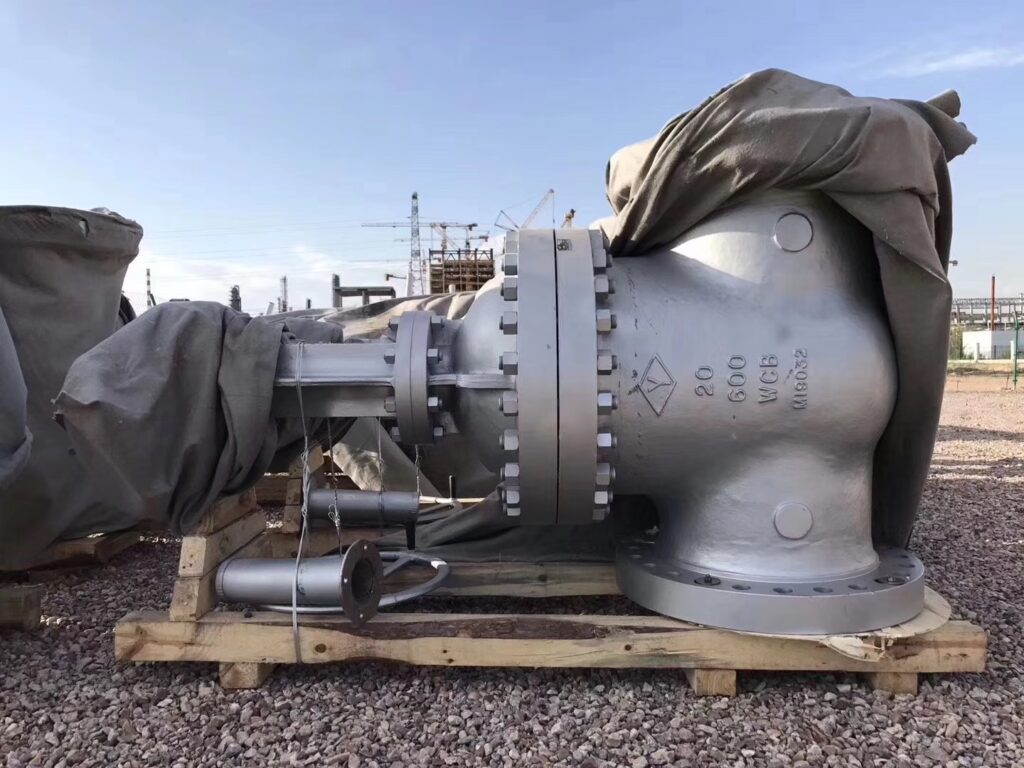
Gate valves are essential components in plumbing and industrial applications, serving the crucial purpose of controlling the flow of fluids. Whether you’re a plumber, engineer, or an individual working with industrial equipment, it is imperative to be able to identify a 仕切り弁 accurately. By doing so, you can ensure its proper operation and maintenance, leading to optimal performance and longevity.
To help you easily identify a gate valve, we have put together this comprehensive step-by-step guide. Through visual inspection and understanding key features, you’ll gain the necessary knowledge to recognize a gate valve with confidence.
Identifying a gate valve is particularly important because it allows you to distinguish it from other types of valves. Different valves serve different functions, and using the wrong type could lead to inefficiencies or even damage within your system.
By visually inspecting the valve body, looking for specific handles, examining the stem movement, inspecting the gate shape, and identifying the bonnet cover, you can quickly determine whether a valve is indeed a gate valve. This knowledge will enable you to operate and maintain it correctly.
In the following sections, we will delve into each step in detail. We’ll provide clear descriptions and visual references to ensure that you grasp each concept thoroughly. So let’s get started on this journey of identifying gate valves!
Step 1: Check the Valve Body

Gate valves are commonly used in plumbing and industrial applications to control the flow of fluids. To properly operate and maintain a gate valve, it is important to be able to identify it. The first step in identifying a gate valve is to check the valve body.
Gate valves typically have a rectangular or square-shaped body. This distinguishes them from other types of valves, such as ball valves or globe valves, which have different body shapes. By visually inspecting the valve body, you can quickly determine if it is a gate valve.
The rectangular or square shape of the gate valve body is designed to accommodate the movement of the gate inside. The gate, バルブを通る流体の流れを制御します, moves up and down within this space. The shape of the body allows for smooth operation and efficient control of fluid flow.
In addition to its shape, you may also notice other features on the valve body that can help in identification. These may include markings or labels indicating the manufacturer or specifications of the valve. Taking note of these details can be helpful for future reference or when ordering replacement parts.
By checking the valve body and noting its rectangular or square shape, you can confidently identify a gate valve. This knowledge will enable you to proceed with further inspection and maintenance tasks specific to gate valves. With this understanding, you will be well-equipped to ensure proper functioning and longevity of your gate valve in plumbing or industrial systems.
Remember that identifying a gate valve involves more than just its appearance; it also requires knowledge of key features and understanding how they contribute to its operation. In the next steps, we will explore additional aspects that will help you further confirm if a valve is indeed a gate valve.
Step 2: Look for the Handle
Gate valves can be easily identified by their distinctive wheel-shaped handle. This handle is typically located on top of the valve and is used to open and close the valve by rotating it clockwise or counterclockwise. The handle provides a clear indication of whether the valve is in the open or closed position.
The wheel-shaped handle is designed for easy operation, allowing users to quickly and efficiently control the flow of fluids. Its shape also serves as a visual cue, making it easy to differentiate gate valves from other types of valves.
When identifying a gate valve, it’s important to note that the handle may vary in size and material depending on the specific application. しかし, regardless of these variations, the wheel-shaped design remains consistent.
In addition to its shape, another key feature of the gate valve handle is its ability to rotate freely. This smooth rotation ensures smooth operation of the valve without any resistance or sticking.
By looking for this distinct wheel-shaped handle, you can easily identify a gate valve among other types of valves. This knowledge will enable you to operate and maintain gate valves with confidence, ensuring their proper functioning in plumbing and industrial applications.
Step 3: Examine the Rising Stem

The rising stem is a key feature of gate valves that sets them apart from other types of valves. 名前が示すように, the stem of a gate valve rises or moves up and down as the valve opens and closes. This movement of the stem is directly connected to the movement of the gate inside the valve.
When examining a gate valve, take note of the stem and observe its motion. ほとんどの場合、, you will notice that when you rotate the handle to open or close the valve, the stem either extends or retracts accordingly. This rising and falling motion of the stem is crucial for controlling the flow of fluids through the valve.
The rising stem feature has several advantages. 初め, it provides a clear visual indication of whether the valve is open or closed. When fully extended, it indicates that the valve is in its open position, allowing fluid to flow freely. Conversely, when fully retracted, it signifies that the valve is closed and no fluid can pass through.
第二に, this design allows for easy maintenance and repair. By observing how far the stem extends or retracts, you can determine if there are any issues with the gate’s movement or if any parts need lubrication. さらに, this feature enables plumbers and engineers to easily identify if a gate valve needs replacement by simply comparing its fully extended length to that of a new one.
要約すれば, examining the rising stem is an essential step in identifying a gate valve. By understanding this key feature and its significance in controlling fluid flow, you can confidently operate and maintain gate valves in plumbing and industrial applications.
Step 4: Inspect the Gate
Gate valves have a unique feature that sets them apart from other types of valves – the gate itself. This is an essential component of the valve that controls the flow of fluid. When inspecting the gate, there are a few key characteristics to look out for.
まず最初に, gate valves have a flat or wedge-shaped gate. This means that when the valve is fully open, the gate lies parallel to the direction of flow. As you close the valve, the gate moves perpendicular to the flow, gradually blocking off the passage for fluids. This design allows for precise control over the flow rate and provides a tight seal when fully closed.
The material used for constructing the gate is also important to consider. Gate valves can have gates made from various materials such as brass, ステンレス鋼, または 鋳鉄, depending on their intended application and operating conditions. It is crucial to ensure that the material of the gate is compatible with the fluids being transported through the valve to prevent corrosion or damage.
さらに, take note of any visible wear or damage on the gate surface. 時間とともに, gates may experience erosion or pitting due to prolonged exposure to abrasive fluids or high-velocity flows. These signs of wear can affect the performance and sealing capabilities of the valve.
By inspecting these key features of a gate valve’s gate, you can easily identify it among other types of valves. Understanding how this component functions and what to look for during inspection will enable you to operate and maintain gate valves effectively in plumbing and industrial applications.
Step 5: Identify the Bonnet
The bonnet is an essential component of a gate valve as it covers the stem and provides a seal to prevent any leakage. It plays a crucial role in maintaining the integrity of the valve and ensuring its proper functioning.
The bonnet is typically made of durable materials such as brass or stainless steel, which are resistant to corrosion and can withstand high pressure. It is designed to securely enclose the stem, protecting it from external elements that could potentially damage or hinder its movement.
One key feature of the bonnet is that it is usually bolted or screwed onto the valve body, creating a tight seal. This prevents any fluid from escaping or leaking out when the valve is in operation. The bonnet also acts as a barrier between the stem and the environment, preventing dust, dirt, or other contaminants from entering and interfering with the smooth operation of the valve.
To identify the bonnet on a gate valve, simply look for a cylindrical or dome-shaped component located at the top of the valve body. It will be attached to the stem and may have bolts or screws securing it in place. The material and design of the bonnet may vary depending on the specific application and industry requirements.
By identifying and understanding the purpose of the bonnet, you can ensure proper maintenance and operation of gate valves in plumbing and industrial settings. Regular inspection and maintenance of this crucial component will help prolong its lifespan and prevent any potential issues that may arise due to leakage or damage.
結論
結論は, identifying a gate valve is an essential skill for anyone working with plumbing or industrial equipment. By following the step-by-step guide outlined in this blog post, you can easily recognize and understand the key features of a gate valve.
何よりもまず, it is important to visually inspect the valve body. Gate valves typically have a rectangular or square-shaped body, distinguishing them from other types of valves. This initial observation can help you quickly identify whether or not you are dealing with a gate valve.
次, pay attention to the handle of the valve. Gate valves usually have a round or square-shaped handle that rotates to open or close the valve. This distinctive feature sets them apart from other types of valves that may have different handle designs.
Another key feature to examine is the stem of the gate valve. Gate valves have what is known as a rising stem, meaning that the stem moves up and down as the valve opens and closes. This upward and downward motion is crucial for controlling the flow of fluids through the valve.
When inspecting a gate valve, it is also important to take note of its gate. Gate valves have a flat or wedge-shaped gate that moves perpendicular to the flow of fluid. This unique design allows for precise control over fluid flow and helps prevent leakage when properly operated.
最後に, identifying a gate valve involves recognizing its bonnet. The bonnet covers the stem and provides a seal to prevent leakage. By identifying this protective covering, you can confirm that you are indeed looking at a gate valve.
結論は, being able to identify a gate valve is vital for proper operation and maintenance in plumbing and industrial applications. By understanding its key features through visual inspection, such as the rectangular body, wheel-shaped handle, rising stem, flat or wedge-shaped gate, and bonnet cover, you can confidently work with these valves in your professional endeavors. Remember that accurate identification ensures efficient fluid control and minimizes potential issues or leaks. それで, equip yourself with the knowledge from this step-by-step guide and become proficient in identifying gate valves.

